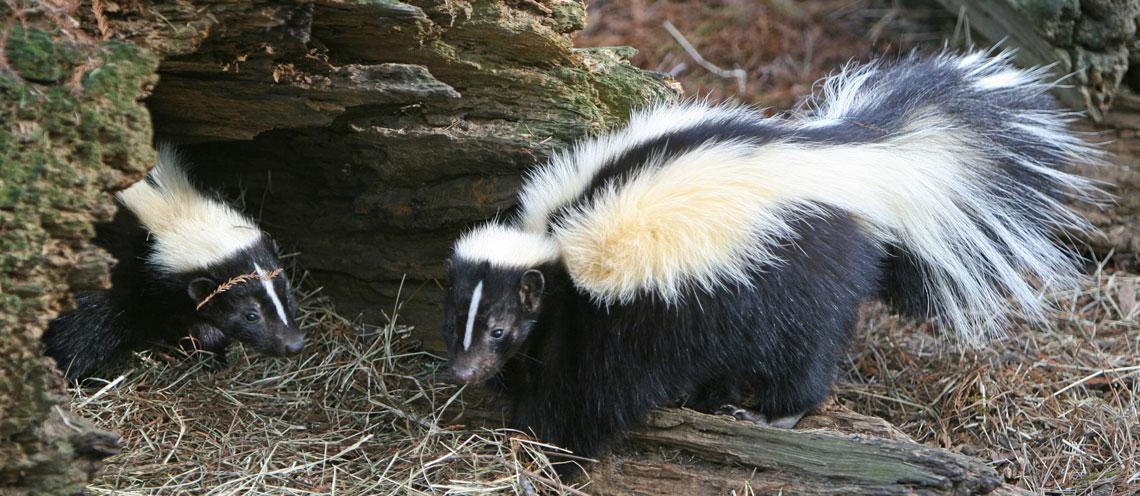
Rabies in Horses
Thursday, September 1, 2016
Rabies is caused by a virus found in the saliva of infected mammals. It is transmitted to animals and humans by bites or potentially by contamination of an open cut or mucous membrane with saliva from the infected animal.
In Oklahoma, skunks are the most common reservoir of rabies. However, bats, raccoons, foxes, cats, dogs and livestock can become infected and pass rabies on to other animals. Its occurrence is uncommon relative to other diseases, which cause neurologic signs in the horse, but it is important as it can be spread to humans.
According to the Centers for Disease Control and Prevention, the total number of horse rabies cases in the USA per year ranges from 42 to 82. The states with the greatest number of rabid horses in 2014 were Texas (11 [44 percent]), Oklahoma (5 [20 percent]), Kansas (2 [8 percent]), and Pennsylvania (2 [8 percent]).
After exposure to the virus, clinical signs typically appear in two to six weeks but longer incubation times have been reported. The virus travels up the nerves near the exposure site to the brain. Horses exposed by a bite to the nose may develop clinical signs sooner than those exposed by a bite to the hind limb.
Clinical signs are highly variable in the horse. The disease progresses rapidly in the horse. Horses with symptoms usually die within five to seven days. During the period between clinical signs and death, infected horses may expose other animals and their human handlers to the rabies virus.
Onset of clinical signs may be subtle and may include:
- sudden change in behavior (depression to manic)
- lameness or unable to rise
- head pressing and circling
- pain or difficulty urinating
- muscle tremors or convulsions
- persistent and painful erection in absence of sexual interest
- loss of appetite
- appearance of choke
- neurologic signs such as incoordination and paralysis
- sudden death may also be seen on occasion
There is no treatment for rabies. Once the clinical signs appear, it is imperative to limit exposure of the infected horse with humans and other animals on the farm.
Call your veterinarian immediately to insure that all other potential causes of the clinical signs have been ruled out before considering rabies. Diagnosis can only be made by post mortem examination of the horse’s brain by the State Public Health Laboratory.
Rabies exposure in horses is less common than in other domestic animals, but prevention through vaccination is highly effective.
Since rabies is life threatening in both horses and humans, vaccination of horses against rabies is highly recommended. Horses at boarding stables, petting zoos or riding stables could potentially expose employees or visitors. This could result in costly post exposure treatments for those exposed. Most veterinarians and veterinary hospital staff receive human rabies vaccinations to protect them from possible exposure.
After an initial series of vaccinations, yearly vaccination is recommended. This will nearly eliminate your horse’s risk of contracting this deadly disease.
The American Association of Equine Practitioners identifies the rabies vaccine as one of the four core vaccinations for horses. Only a rabies vaccine approved for use in horses and foals should be used. Vaccination should begin at 3-4 months of age followed by a second dose at 1 year of age. All horses should receive an annual rabies booster.
Dogs and cats that reside on the premises should also be vaccinated against rabies to limit the spread of the disease from wild animal populations to resident horses and humans.
Do not adopt wild animals as pets. Report the presence of any animals exhibiting abnormal behaviors to your veterinarian.
For more information, read Rabies has many Faces.
by Elisabeth J. Giedt, DVM
Veterinary Viewpoints is provided by the faculty of the OSU Veterinary Medical Hospital. Certified by the American Animal Hospital Association, the hospital is open to the public providing routine and specialized care for all species and 24-hour emergency care, 365 days a year.
